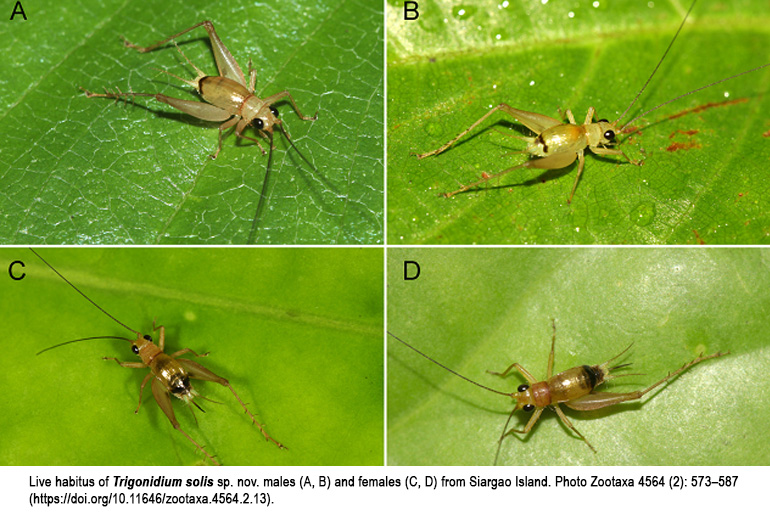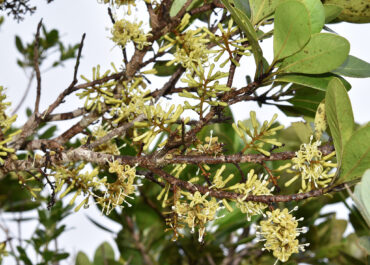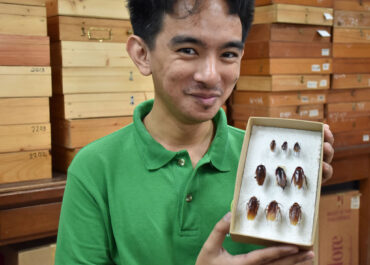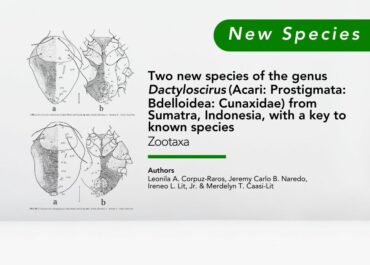From the surfing capital of the Philippines, three new crickets are now described

A “mute” one and two “singing” are the new species of crickets just described from Siargao Island, the surfing capital of Philippines, this 2019. A result of surveys done last year in several areas of Del Carmen town of this island in Mindanao, the new crickets reinforce scientific literature that the nation is indeed one of the megadiverse countries in the world.
The three new species is a product of the close scientific collaboration between researchers of the University of the Philippines Los Banos (UPLB), National University of Singapore, Paris-based Muséum national d’Histoire naturelle and the Russian Academy of Sciences. The researchers from UPLB were MNH curator Dr. Sheryl A. Yap and current director of the College of Agriculture and Food Science-Institute of Weed Science, Entomology, and Plant Pathology and University Researcher Jessica B. Baroga-Barbecho of the Office of the Vice-Chancellor for Research and Extension-Bee Program.
Paranisitra flavofacia 2019 Baroga-Barbecho, Yap, Tan and Robillard
This new cricket has been collected in an agro-forestry area in Siargao Island which is dominated with coconut trees “We saw the crickets courting and mating on top of lush vegetation,” said Jessica Baroga-Barbecho, main author of the scientific article (https://doi.org/10.11646/zootaxa.4568.1.5) which described the new species.The researchers originally thought that the crickets were common but upon comparing them with specimens collected from Mindanao from 1958 to 1961 and deposited at the Bernice P. Bishop Museum in Hawaii, they determined that the insect was distinct from existing species. Paranisitra flavofacia is now the sixth species of Paranisitra in the world, with the first five coming from the islands of Luzon, Mindoro, Leyte and Mindanao.
P. flavofacia is yellow to golden brown in color and has a black head vertex. The species’ entire face and mouthparts are yellow. “We named the new species from the combination of the Latin words “flavo meaning yellow and “faciem” meaning face,” she explained.
Interestingly, the new species is mute and cannot produce any song. “The genus Paranisitra have evolved to lose its wings; why so and when is a fascinating topic for future research,” the young entomologist said.
Endodrelanva siargaoensis 2019 Tan, Gorochov, Baroga-Barbecho and Yap
E. siargaoensis is a new species of bark cricket which the researchers found calling among hanging dead branches and leaves in a trail in the town of Del Carmen. Surprisingly, only seven species of bark crickets (Landrevinae) have been described so far from the Philippines and distributed among the genus Ajorama, Duolandrevus, and Repapa. Aside from being a new species record, the discovery is a new genus record for the Philippines.
E. siargaoensis is the tenth species of the genus Endodrelanva which was erected in 2000. The authors of the paper (https://doi.org/10.11646/zootaxa.4544.2.8) describing the new species noted that the earlier discovered species of the genus have been found in the Malay Peninsula and Borneo.
“Endodrelanva was previously unknown in the Philippines, but we think that there are probably more species which can be found in the country and other regions in Southeast Asia since these crickets are widely distributed.” Dr. Sheryl A. Yap, co-author of the description explained.
“We just need more time and effort to collect, specially in other areas in Mindanao,” Yap said.
Trigonidium solis 2019 Tan, Baroga-Barbecho and Yap
The third species newly-described is a sword-tailed cricket named as Trigonidium solis. According to the researchers, the species name refers to the cricket’s semblance to the sun (= solis, in Latin) due to its round body and yellow color.
Based on their article (https://doi.org/10.11646/zootaxa.4564.2.13), T. solis is remarkably similar to other several species not only in Trigonidium but in in other orthopternan genus, particularly Rhicnogryllus and Metioche.
Because Trigonidium is a very large group of more than 150 species, it would be very difficult to compare potentially new species with existing ones. “Taxonomists would really have to employ different methods such as detailed description of the male genitalia, mating and calling songs, and molecular data,” Yap explained.
Discoveries made in harmony with others
Jessica Baroga-Barbecho and Dr. Sheryl Yap shared that “none of the discoveries would have been possible if not for the support of other scientists, their organizations, and funding agencies.”
“The DOST and DOST-PCAARRD, UP COOPERATE, MODECERA Project, Lady Yuen Peng McNeice Graduate Fellowship and Orthoptera Species File grants our team has been able to tap provided us with the necessary funds to make the research a success,” Ms. Baroga-Barbecho intimated.
Also, the researchers have aired their gratitude to their local partners. “Of course we would like to thank, aside from our partner research institutions, several generous and kind-hearted organizations who significantly helped our research endeavors: Siargao Islands Wildlife Conservation Foundation, Inc., Surigao State College of Technology-Del Carmen Campus, and of course, Mayor Alfredo Coro, Jr. and the municipality of Del Carmen,” Dr. Yap ended.
Search
Archives
Categories
- Announcement (21)
- Feature (21)
- News (141)
- Press Release (55)
- Research (4)
- Services (3)



